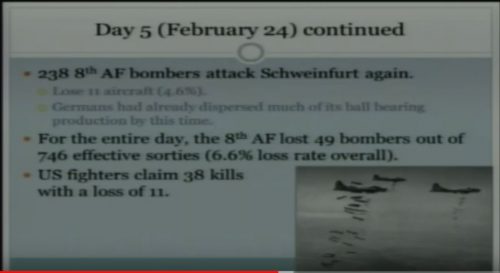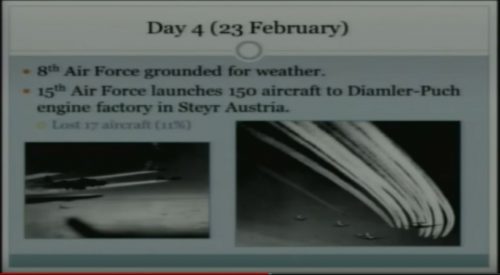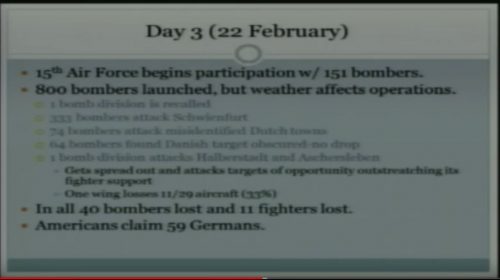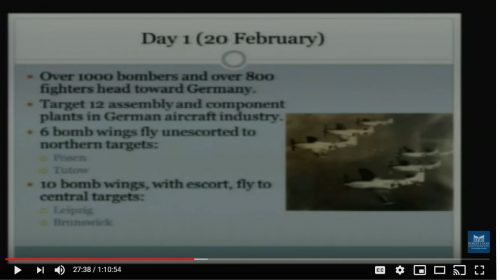

Missions 237, 238 and 239 are flown against targets in France; 7 B-17s are lost. Heavy clouds cause over half the bombers dispatched to return without bombing..Mission 237: 49 of 81 B-24s hit the Ecalles sur Buchy V-weapon sites; 1 B-24 is damaged. Escort is provided by 61 P-47s.Mission 238: 258 B-17s are dispatched against V-weapon sites in the Pas de Calais; 109 hit the primary target, 10 hit a road junction E of Yerville, 7 hit a rail siding SW of Abbeville and 6 hit targets of opportunity; 7 B-17s are lost and 75 damaged; casualties are 5 WIA and 63 MIA. Escort is provided by 81 P-38s, 94 P-47s and 22 P-51s; 1 P-38 is damaged beyond repair; the P-51s claim a single German aircraft on the ground..Mission 239: 5 of 5 B-17s drop 250 bundles of leaflets[clarification needed] on Amiens, Rennes, Paris, Rouen and Le Mans, France at 20232055 hours without loss.
Bomber Command directly contributed to the attacks on the aircraft industry in Schweinfurt. Some 734 bombers were dispatched on the night of 24/25 February, and 695 struck the target.[1] Of the bombs dropped, 298 hit within three miles and 22 hit inside the target area. Little damage was done.
.
For extensive background, see this Wikipedia article, where the passage above came from:
In July, when a bomber group took over Horsham Saint Faith, Zemke’s men relocated to a half-built base at Halesworth Suffolk. Upset with the second-rate treatment his command seemed to be experiencing, Zemke joined a group of Eighth Air Force bomber commanders in a gripe session. The 4th Bomb Wing’s Colonel Curtis LeMay (chief of the postwar Strategic Air Command) complained that the only fighters he had seen so far ‘all had black and white crosses on them,’ but declared his bombers would carry on ‘with or without fighter escort.’
.
Later, in the officers’ club, another bomber general stated he ‘wouldn’t pay a dime a dozen for any fighter pilots.’ Zemke hurled his pocket change at the man’s feet:
.
‘Here, General, this is all I have handy at the moment,’ he responded. ‘Any time you have a couple dozen fighter pilots handy send them my way. We can sure use them.’ Then he jumped in his Jug and buzzed the place.



